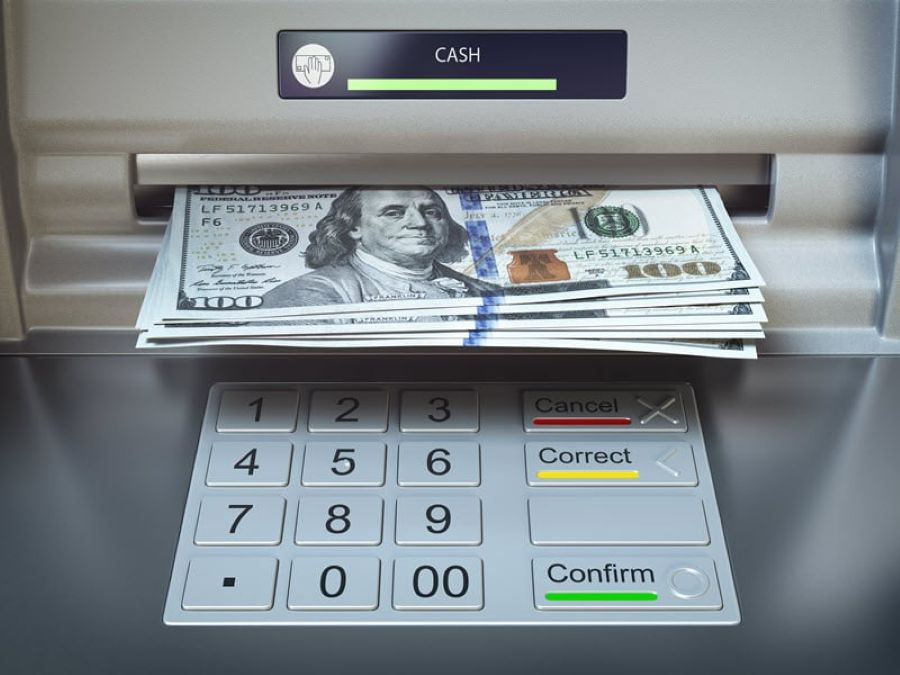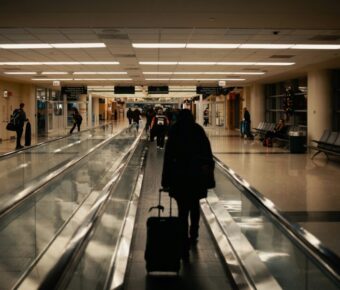
Cash vs Card Thailand Travel: 7 Crucial Tips to Save Money and Avoid Hassles
Traveling to Thailand always brings up that classic dilemma—should you carry cash, or just count on your card? I’ve been caught fumbling at a crowded Bangkok market, card in hand, only to get a polite head shake and a gesture toward the nearest ATM. Cash still rules most of Thailand, but cards are catching on in tourist areas, so honestly, you’ll want a bit of both to keep things smooth.
I’ve learned (sometimes the hard way) that ATM fees can pile up fast, and you’ll rarely get a card accepted at a tiny food stall or in a tuk-tuk. Still, having options feels good. Stick around, and I’ll share when to flash your baht and when your card might actually work.
Table of Contents
- Key Takeaways
- Cash vs Card in Thailand: What Travelers Need to Know
- Key Differences Between Cash and Card Payments
- Prevalence of Cash-Only Transactions
- Cash vs. Card: Pros and Cons in Thailand
- Using Cash in Thailand
- Where Cash Is Essential: Local Markets and Street Food
- Withdrawing Thai Baht from ATMs
- How to Get the Best Rates: Currency Exchange Tips
- Understanding ATM Withdrawals and Fees
- ATM Fees in Thailand: What to Expect
- ATM Networks and Types: Thai Banks and AEON
- Avoiding Extra Charges: Foreign Transaction Fees and Commissions
- Daily Withdrawal Limits and Security Tips
- Credit and Debit Card Usage in Thailand
- Acceptance in Department Stores and Hotels
- Digital Payments and Apps for Travelers
- International Credit Card Tips
- Managing Your Travel Budget: Practical Tips
- Allocating Cash vs Card for Different Expenses
- Keeping Your Money Safe from Pickpockets
- Reimbursing Yourself After Your Trip
- Frequently Asked Questions
- What are the advantages of using credit cards over cash for travel expenses in Thailand?
- How widely accepted are international debit cards at Thai establishments?
- What options are available for withdrawing cash in Thailand without incurring high fees?
- Should travelers to Thailand opt for a forex card or rely on cash transactions?
- What are the best practices for handling currency in Thailand for foreign visitors?
- Are there any specific tips for Indian tourists regarding card usage and charges in Thailand?
- Book Your Dream Experience
- More Travel Guides
Key Takeaways
- Cash remains king in most places around Thailand.
- Cards usually work in larger cities and touristy spots.
- Balance your wallet to dodge fees and avoid payment hassles.
Cash vs Card in Thailand: What Travelers Need to Know

Thailand’s a wild mix of old-school markets and shiny malls, so how you pay really depends on where you are. The smartest way to handle your money? It all comes down to your plans and where you’ll spend your time.
Key Differences Between Cash and Card Payments
Cash dominates daily life in Thailand. Street stalls, night markets, and local buses just won’t take cards. You’ll really need Thai baht for simple things—water, tuk-tuks, or a quick bowl of noodles.
Card payments show up more in malls, bigger restaurants, hotels, and touristy areas. Even then, not every place in the city will take your card. Visa and Mastercard get the green light more often, but American Express? Not so much.
Sometimes, small shops tack on a 2-3% fee for card payments—so ask before you hand over your plastic. And don’t be shocked if your card just gets declined for no reason at all (happened to me, and I had to dash to an ATM).
Use cards for bigger buys, online bookings, or anything where you need a receipt—like flights, hotels, or comparing travel deals on flights, hotels, and cars.
Prevalence of Cash-Only Transactions
Cash rules in most of Thailand, especially once you step out of the tourist bubble. Wander into a rural village, hop on a songthaew (those shared trucks), or haggle at a night market—nobody will have a card reader. Temples, smaller guesthouses, and street food carts? Cash only.
Even in Bangkok, you’ll run into plenty of cash-only spots—think food courts and little shops. ATMs pop up everywhere in the cities, but on remote islands or in rural areas, they can get scarce. Keeping enough cash for a day or two is just smart.
Thai ATMs usually charge a withdrawal fee, so if you’re not careful, it adds up. I always suggest pulling out a decent chunk at once (not so much that you’re stressed carrying it, though). And seriously, keep small bills handy—vendors rarely have change for big notes.
Cash vs. Card: Pros and Cons in Thailand
Cash Pros:
- Works pretty much everywhere—markets, buses, you name it
- Perfect for small stuff, tips, bargaining, and local rides
- No surprise card fees or “machine error” headaches
Cash Cons:
- Carrying too much feels risky
- ATM fees can quietly eat your budget
- Pocketfuls of coins and notes get annoying
Card Pros:
- Safer to carry, and if you lose it, you can just block it
- Great for big purchases, hotels, or emergencies
- Easier to track your spending
Card Cons:
- Lots of places (especially rural) just won’t take it
- Foreign transaction or bank fees with every swipe
- Some shops add a fee for card payments
My go-to strategy? Use a card for the big stuff—accommodation, emergencies—but always keep enough baht for daily exploring. Nothing ruins the mood like missing out on mango sticky rice because you forgot to hit the ATM.
Using Cash in Thailand

In Thailand, cash isn’t just handy—it’s non-negotiable in plenty of situations. You’ll end up reaching for your wallet every day, especially when you step away from tourist hotspots.
Where Cash Is Essential: Local Markets and Street Food
If you want to really experience Thailand, you’ve got to wander local markets in Bangkok or grab spicy pad thai from a street vendor in Phuket. And here’s the reality: these places run on cash. Try waving your credit card at a night bazaar or floating market—they’ll just laugh and wave you off.
Small shops, tuk tuk drivers, tiny cafés, and even some mid-sized restaurants rely on Thai baht. Honestly, it’s part of the experience. You’ll get used to counting change and figuring out which note is which. There’s a weird satisfaction in buying mango sticky rice with the exact change.
Local food stalls only accept cash, and you get massive portions for what you pay. No baht? You’ll miss out on the best food and the coolest souvenirs.
Withdrawing Thai Baht from ATMs
You’ll spot ATMs on almost every corner in Chiang Mai, Bangkok, and Phuket. The catch? The fees. Thai ATMs usually charge a fixed fee (about 200 baht per transaction), and if you keep withdrawing small amounts, it adds up.
Bring a debit card or ATM card that works worldwide. Check if your PIN is 4 or 6 digits—most ATMs now accept both, but it’s worth confirming. Some cards slap on an extra foreign exchange fee, so keep an eye out.
From experience, withdrawal limits per transaction hover around 20,000 baht. I plan my cash needs for the week so I only hit the ATM once or twice per trip. It’s less hassle.
How to Get the Best Rates: Currency Exchange Tips
Airport exchange counters? Just don’t. The rates are almost always awful. I fell for it once, never again. Now, I hunt down licensed exchange booths in city centers or touristy spots.
You’ll usually get the best rates from local money changers in busy areas (SuperRich in Bangkok is a classic). Banks are okay, but sometimes the lines are just not worth it. Compare a few places before you commit. And always bring crisp, new bills if you’re exchanging—torn or marked notes might get rejected or fetch a worse rate.
Quick hits for better rates:
- Skip airport money changers.
- Shop around at booths, banks, and hotels.
- Watch for hidden commission fees.
Carrying baht in small bills makes life easier—especially for street food or taxis. No one wants to break a 1,000 baht note for a 30 baht snack.
Understanding ATM Withdrawals and Fees

Getting cash in Thailand is easy, but rarely cheap. Banks like Krungsri or AEON can save you a bit, and knowing the fees and daily limits helps you stay in control and avoid drama.
ATM Fees in Thailand: What to Expect
ATMs are everywhere, from tiny villages to Bangkok’s chaos. But most don’t play nice with foreign cards.
Nearly all Thai bank ATMs charge a withdrawal fee for international cards—usually 200 to 220 baht per transaction. A few smaller banks might be a bit less, but free withdrawals? Rare. If you make a bunch of small withdrawals, the fees sting.
Tip: Pull out bigger amounts each time instead of lots of little ones. That way, you only pay the fee once per transaction. Over a trip, those extra fees add up, especially if you’re moving around or splitting bills with friends.
ATM Networks and Types: Thai Banks and AEON
You’ll see purple ATMs (SCB), green (Kasikorn), blue (Bangkok Bank), yellow (Krungsri), and a few others every few steps in cities.
But honestly? AEON machines are my favorite. You won’t find them everywhere, but when you spot that pink AEON ATM, stop. Their fees are usually lower and they’re not picky with foreign cards. I remember in Chiang Mai, the AEON ATM by the night market saved me about 50 baht over the nearest big bank. That covered my fried bananas and a water—small wins, but hey, it adds up.
Here’s a quick peek at what you’ll pay:
| Bank/Network | Typical Fee (THB) |
|---|---|
| AEON | Lower (check display) |
| Major Thai Banks | 200–220 |
If you’re at an ATM in a mall or airport, check the fee on the screen before you hit “confirm.” Some “convenience” spots charge even more.
Avoiding Extra Charges: Foreign Transaction Fees and Commissions
Your home bank might also hit you with a foreign transaction fee—sometimes called an “international service assessment fee” or “commission.” That one’s sneaky. You’ll only spot it when you check your statement back home. I once got smacked with a surprise 3% on every withdrawal. Not fun.
Cards like Wise (the old TransferWise), N26, or Revolut offer low or zero foreign usage fees. If you travel a lot, these are worth grabbing before your trip. They also give you near-market conversion rates, so you dodge those hidden bank rip-offs.
Pro tip: When the ATM asks, always choose to be charged in Thai baht, not your home currency. Dynamic currency conversion usually means a worse rate for you.
Daily Withdrawal Limits and Security Tips
Most Thai ATMs let you pull out between 20,000 and 40,000 baht per day, but single withdrawals might be capped at 10,000–20,000. Not that you’ll ever need 40,000 baht in cash (unless you’re buying a scooter, but that’s a different adventure).
Use ATMs indoors—inside banks, malls, or even 7-Eleven. It’s safer, and there’s less chance of tampering. Cover your PIN and keep an eye out behind you. I’ve never had an issue, but better safe than sorry.
Don’t keep all your cash or cards in one spot. Hide a backup card in your luggage or at the hotel. If your main card gets eaten by a machine, you’ll still have a way out.
Credit and Debit Card Usage in Thailand

Using a credit or debit card in Thailand can make travel smoother, especially in places that see a lot of tourists. Still, cash is the only way in small shops and local markets, so you’ve got to play it by ear.
Acceptance in Department Stores and Hotels
Big department stores and hotels generally accept major credit and debit cards—Visa and Mastercard work almost everywhere, but American Express is hit or miss. High-end malls or international hotel chains? No problem. Smaller boutique hotels or local joints, especially outside Bangkok, might only take cash.
Watch out for extra fees—some stores or hotels tack on 2-3% for card payments, so check your bill before you tap. Always keep your card in sight when you pay, just to be safe.
If you’re booking tours or tickets as you go, credit cards work on the big travel sites. You can grab tours and activities or attraction tickets with your card and avoid carrying a wad of baht.
Digital Payments and Apps for Travelers
Thailand’s gone digital in a lot of ways lately, but cash still rules when you’re buying mango sticky rice in a market or haggling for a tuk-tuk ride. In cities like Bangkok or Chiang Mai, you’ll spot more places with contactless payment signs—Apple Pay, Google Pay, or just a tap-to-pay card.
It’s honestly a relief when you can tap your phone for coffee or hop on the Skytrain without digging for coins. But don’t count on this outside the main cities.
Travelers have started using Wise cards more to dodge those painful foreign transaction fees. Digital wallets like Rabbit LINE Pay or TrueMoney Wallet show up in larger shops, but they usually require a Thai phone number.
I’ve tried them, but honestly, it’s simpler to stick with your card in the city and switch to cash when you’re exploring the countryside.
If you like to plan ahead (and who doesn’t?), you can book day trips online. Most booking sites take international cards, so you might not even need to hit an ATM for your first adventure.
International Credit Card Tips
Always bring two cards. If you lose one or the bank blocks it, you’ll thank yourself for having a backup.
Let your bank know you’re traveling, or you might get that dreaded “suspicious activity” freeze at the worst moment. When you hit an ATM, choose to be charged in Thai baht. The exchange rate is almost always better that way.
ATM fees are a bit of a sting—most charge you about 200 baht per withdrawal, and your own bank might pile on more. Try to withdraw enough for a few days, not just a single meal.
Avoid using your credit card for cash advances. The interest starts immediately and it’s never a good surprise. Debit cards work better for ATM withdrawals.
For big stuff like hotels or tours, cards are perfect, but always keep some cash for tuk-tuks, street eats, or that random temple donation box.
Managing Your Travel Budget: Practical Tips

Mixing cards and cash in Thailand gives you more control and keeps your money safer. Planning each payment, keeping an eye out for pickpockets, and tracking your spending can take a lot of stress out of your trip.
Allocating Cash vs Card for Different Expenses
Split your budget between Thai baht in cash and a trusty card. Local markets, street stalls, and taxis want cash—some won’t even look at your card.
Hotels, malls, and nicer restaurants? They’ll swipe your Visa or Mastercard without a second thought.
I usually carry enough cash for two or three days—just enough for meals, taxis, and snacks. ATMs are everywhere, but fees add up, so taking out a bit more at once saves money (just don’t walk around with your whole trip’s budget in your pocket).
Use your card for the bigger expenses like hotels or tours. Make sure your card has no foreign transaction fees; those little charges sneak up on you.
Here’s a tip I wish someone had drilled into me earlier: bring a small money belt or lockable pouch. It’s not stylish, but after getting pickpocketed in Chiang Mai, I never travel without one.
Keeping Your Money Safe from Pickpockets
There’s nothing worse than reaching for your wallet and finding nothing but an empty pocket. Thai pickpockets move fast, especially in crowded places—think night markets, jam-packed buses, or wild festivals.
Keep your wallet in your front pocket or a zipped bag. Don’t flash big bills or a wad of cash.
Some travelers use a dummy wallet with a few small bills and expired cards. Feels a bit like a spy movie, but hey, it works if it keeps your real stash safe.
Photocopy your passport, cards, and jot down emergency numbers. Store them somewhere separate from your wallet. Losing your stuff is bad enough; losing all your info is a nightmare.
Carry only a day’s worth of cash and leave the rest locked up at your hotel. Don’t rely on just one way to pay. If you lose your main card, you’ll want a backup—either hidden cash or a second card.
Reimbursing Yourself After Your Trip
If you’ve covered group expenses—like booking a hotel or buying train tickets for everyone—it’s way too easy to lose track of who owes what.
I jot down expenses as I go, even if it’s just in my phone’s notes app. XE Currency is handy for quick conversions.
Apps that split bills and keep a running tally are lifesavers, especially when you’re dealing with multiple currencies. Once you’re home, pay each other back however you like—cash, bank transfer, or a payment app.
Double-check what’s owed before you settle up. Exchange rates shift, and little differences can add up over a few weeks.
If you used a credit card with travel perks or insurance, check for claims or refunds before your statement closes. Keep those receipts or records—sometimes that crumpled slip of paper is the only thing between you and a successful [travel insurance] claim.
Frequently Asked Questions
If you’re heading to Thailand, you’ll want to know how to juggle cash and cards, where you can use them, and a few sneaky ways to dodge extra charges. There are some clever tricks to stretch your budget if you know where to look.
What are the advantages of using credit cards over cash for travel expenses in Thailand?
Credit cards make life easier for hotel bookings, mall shopping, or eating at touristy restaurants. You won’t need to carry a thick wad of cash or stress about losing it.
Some cards come with perks—travel insurance, rewards points, or no foreign transaction fees. Over a long trip, those little savings really add up.
How widely accepted are international debit cards at Thai establishments?
In cities and tourist hotspots, you’ll usually have no trouble using international debit cards at hotels, big restaurants, or popular stores.
Head to a local market or tiny food stall, though, and you’ll need cash. I’ve nearly ended up washing dishes for a bowl of noodles because I forgot that lesson.
What options are available for withdrawing cash in Thailand without incurring high fees?
ATMs are everywhere, but most charge a fee for foreign cards. To cut costs, look for banks that partner with your home bank or just take out larger amounts less often.
Some travel cards or credit cards refund ATM fees or offer better rates. Call your bank before you leave—it’s a boring call, but it can save you real money.
Always decline the ATM’s currency conversion offers; their rates are usually terrible.
Should travelers to Thailand opt for a forex card or rely on cash transactions?
Forex cards are handy—you can pre-load Thai Baht and keep an eye on your spending. But markets, taxis, and many small businesses still want cash.
A mix works best. I keep cash for daily stuff like street food and use my card for hotels or bigger splurges.
What are the best practices for handling currency in Thailand for foreign visitors?
Bring enough Thai Baht to get through your first couple of days—think taxis, snacks, and emergencies. Use ATMs later for more cash.
Exchange money only at banks or official counters. Don’t trust random people on the street, no matter how friendly they seem.
Count your bills before you leave the counter—learned that one the hard way.
Keep small bills for street food or local buses, since they rarely have change for big notes. Split your cash between your wallet and a hidden spot, just in case.
Are there any specific tips for Indian tourists regarding card usage and charges in Thailand?
If you’re coming from India, I’d say go for a global card that skips foreign transaction fees, or pack a multi-currency forex card. Seriously, don’t forget to tell your bank you’re traveling—otherwise, you might find your card suddenly blocked, and nobody wants to deal with that hassle mid-trip.
Some Indian debit cards just refuse to work internationally, so check with your bank before you count on it. When you’re paying, always choose to be charged in Thai Baht rather than INR—Dynamic Currency Conversion (DCC) can sneak in extra costs you don’t need.
If you’re using a travel-friendly credit card, keep an eye out for those loyalty points. They add up faster than you’d think and can score you some decent perks down the road.



